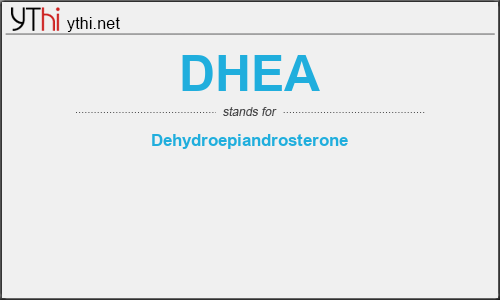What does DHEA mean? What is the full form of DHEA?
The Full Form of DHEA is Dehydroepiandrosterone.
Dehydroepiandrosterone (DHEA), also known as androstenolone, is an endogenous steroid hormone precursor. It is one of the most abundant circulating steroids in humans. DHEA is produced in the adrenal glands, the gonads, and the brain. It functions as a metabolic intermediate in the biosynthesis of the androgen and estrogen sex steroids both in the gonads and in various other tissues.
Adequately powered, long-term clinical trials are lacking to support therapeutic use of dehydroepiandrosterone (DHEA) and dehydroepiandrosterone sulfate (DHEAS) supplementation (hereafter jointly referred to as DHEA/S). Reviews of clinical trials found no convincing evidence to support a place in therapy for DHEA in improving cognitive function or physical strength in elderly patients, or in treating postmenopausal symptoms in women, hyperlipidemia or insulin resistance, schizophrenia, or cancer. Some evidence exists to support the use of DHEA/S supplementation in women with diminished ovarian reserves, in subpopulations of elderly women with osteoporosis, and in mild systemic lupus erythematosus. DHEA is recommended as third-line monotherapy or adjunctive therapy for treatment of major depressive disorder (MDD) by Canadian Network for Mood and Anxiety Treatments (CANMAT) clinical guidelines, and limited data suggest a potential role for DHEA as an anxiolytic.
DHEA
means
Dehydroepiandrosterone![]()
Translate Dehydroepiandrosterone to other language.


Leave a Reply
You must be logged in to post a comment.